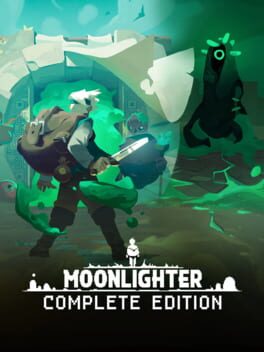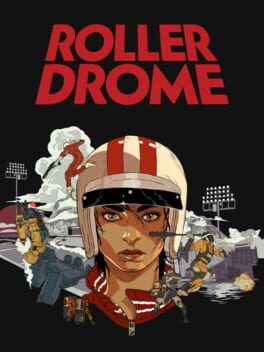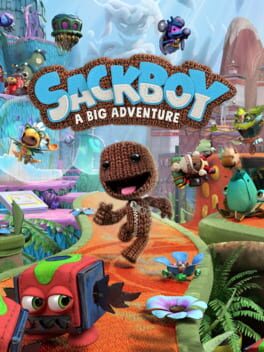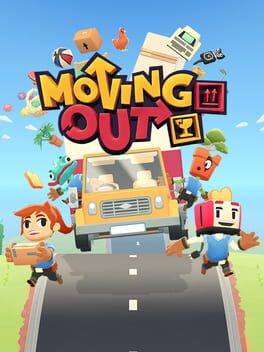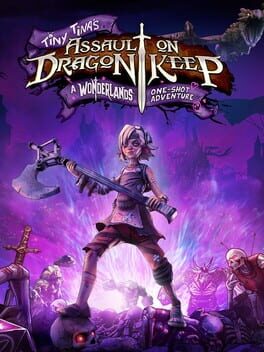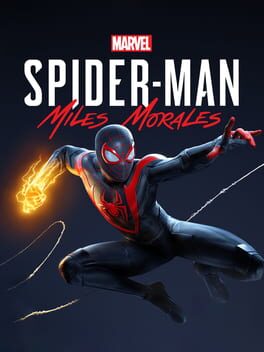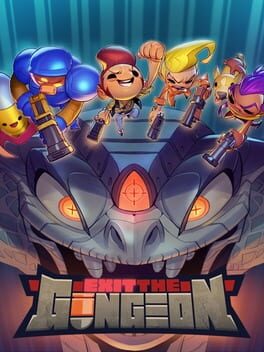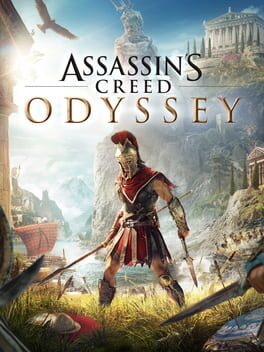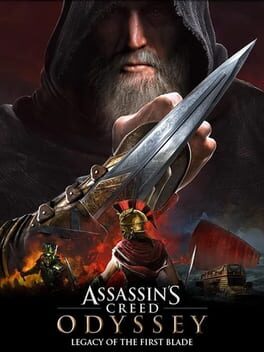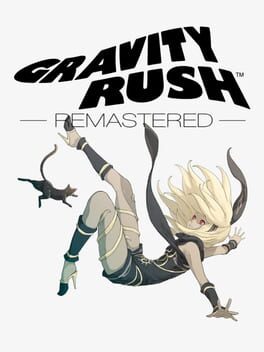DevilXHunter
I’m not mad, I’m disappointed… The premise of Moonlighter is appealing, manage your little shop by day, slay by night, very reminiscent of Rune Factory. It works! Just not most of the time. This game was addicting when I first started playing it, the formula is just so charming. The shop aspect was the most endearing if you can believe it. The problem is progress is slow… very much so. It gets to a point where you know you’ll make more money if you progress the dungeon instead of managing the shop, but the upgrades to help you do so get very expensive. The money you’re getting isn’t enough since you’re stuck in the lower floors. This leads to the grind, don’t misunderstand me, clearing the floors is very doable it just becomes boring. This isn’t helped by the fact that once you move from one dungeon to the next, there isn’t much there besides a new colour palette. The same grind as the last dungeon but with higher numbers. I would guess they did this to squeeze some more playtime hours from the player, but if the devs had tweaked the sliders more in favor of faster player progress it would’ve made the experience more digestible.
I played the complete edition in 2024, possibly the best Moonlighter experience. Looking up trophy guides and wiki entries it seems this was bug riddled mess on release, with most issues persisting for years. I didn’t find any of that, but I found myself pleasantly surprised the glitch to get infinite money was still present. It trivialized the shop aspect, but the faster progress made up for it. That is until I reached the dlc.
The Between Dimensions DLC fits the definition of “more content”. It’s higher numbers and more grind, I quite liked the idea of it, but many of the base game problems are made even worse here. For starters “Le Retailer” doesn’t sell you any of the items found in the new interdimensional dungeon, you’re either on your own looking for them or trading them with the new Rat vendor. These new items are essential to get through the new dungeon as with each floor the damage values get absurdly high. This isn’t helped by the fact you can only trade the rarest items. Carbon Plate Fiber for example, has a low value amongst the new materials, it only drops in the very first two floors and it’s not a very common drop. It’s loop after loop after loop after loop until you can get enough materials to craft new armor, make it a bit further and then loop again.
You’d think I rate this game lower with all I’ve said but there was a lot of care and love put into it, the art work is charming, the gameplay is pretty decent as well as the core idea. This game had a lot going into it but it just didn’t know how to fit all the pieces properly. It’s not bad for a first studio’s release, I’m looking forward to see what they put out next and hope they learned from the cracks this game had.
I played the complete edition in 2024, possibly the best Moonlighter experience. Looking up trophy guides and wiki entries it seems this was bug riddled mess on release, with most issues persisting for years. I didn’t find any of that, but I found myself pleasantly surprised the glitch to get infinite money was still present. It trivialized the shop aspect, but the faster progress made up for it. That is until I reached the dlc.
The Between Dimensions DLC fits the definition of “more content”. It’s higher numbers and more grind, I quite liked the idea of it, but many of the base game problems are made even worse here. For starters “Le Retailer” doesn’t sell you any of the items found in the new interdimensional dungeon, you’re either on your own looking for them or trading them with the new Rat vendor. These new items are essential to get through the new dungeon as with each floor the damage values get absurdly high. This isn’t helped by the fact you can only trade the rarest items. Carbon Plate Fiber for example, has a low value amongst the new materials, it only drops in the very first two floors and it’s not a very common drop. It’s loop after loop after loop after loop until you can get enough materials to craft new armor, make it a bit further and then loop again.
You’d think I rate this game lower with all I’ve said but there was a lot of care and love put into it, the art work is charming, the gameplay is pretty decent as well as the core idea. This game had a lot going into it but it just didn’t know how to fit all the pieces properly. It’s not bad for a first studio’s release, I’m looking forward to see what they put out next and hope they learned from the cracks this game had.
This game is one of, if not the most insane sci-fi story out there, touching on nearly trope the genre has to offer making it a unique and memorable experience. It’s hard to grasp the scope, to piece together what you’re consuming and how it fits in the puzzle. Confusion haunts the majority of the game. It’s part of the formula that keeps 13 Sentinels so engrossing.
It’s tough to review this game without telling you what it’s about, and I don't mean the plot but the experience itself. Let me elaborate. Whenever you start a new game you’re not familiar with you trip and stumble doing silly things, you attack everything around you to see what breaks, you try talking to every NPC to get something. In a nutshell, you try every action available and learn from the responses you get. That’s our way to understand the worlds we get into, how we get familiar with the rules the game devs set. In your first 5 hours, 13 Sentinels will toy with this idea, it will teach you using deceit. After finishing the first set of prologues the game opens up to an overwhelming degree, letting you continue the story of the characters you just played as at your own leisure. This is where the guess work begins, picking up a character’s story will leave you at a state that doesn’t quite make sense. There isn’t a linear progression from where you last left it at, sometimes it will be as if you never did the prologue at all, you’re back to square one, but things seem a little different. You get the flowchart. A web of seemingly interconnected events that more often than not take you back to the same starting point despite progressing further. The game is certainly teaching you something, though you start doubting what is shown to you. This is where your mind starts to wander. What is happening? Is this an alternate story? A different character? Time-period? Timeline? Universe? My mind surely went through these theories and more.
There is a golden rule in horror media, “Don’t show the monster”. When you do it stops being scary. The reason is because what is the scariest is what your mind comes up with, your thirst of expectation grows wild as it brews in your head. When you show the monster, it becomes underwhelming compared to whatever you concocted in your mind. 13 Sentinels gives me a similar feeling throughout, where my theories were put to test with each new reveal, to my surprise what lied behind the curtain was an escalation, an even crazier idea than the concepts I thought of. It tore down what I planned, and where did that take me? Back to square one. In a funny way the gameplay loop is the ideas that run through your head and the re-conceptualization at each step. Your experience is likely to be different than mine, the plot can be tackled in any order feeding reveals at different paces. 13 Sentinels balances this by locking you out of some events until you have better understanding of others. This is a fail-safe that keeps the sense of escalation going. Of course, it doesn’t do so infinitely, it has to crescendo at some point. Whether the final reveal and conclusion is satisfying is up to how your expectations were met, and whether your head went beyond what Vanillaware had in mind. I for one, was pretty satisfied with the conclusion, the epilogue was a wholesome cherry on top of the whole experience.
The plot of 13 Sentinels is boxed in the “Remembrance” section, which I’d argue is the gameplay itself, but I’d be remiss if I didn’t talk about “Destruction”, a complete subversion of the formula. Much like in the game I wasn’t quite sure where it fit in this review. Destruction takes place in the very final battle, but is introduced at the very beginning. It’s very akin to an RTS and possibly added as a selling point. I understand the idea of a visual novel is a very hard sell to your average gamer. Destruction has a complex UI and as such the game holds your hand through the majority of it. It starts too slow and seemed like a distraction from the main plot… at the start. In time I really started to enjoy it. The strategic scenarios are clever, it becomes a decent challenge towards the end of the game. I just found it a shame it took so long to click.
I’ve played several graphic novels in the past and let me tell you, most of them aren’t good. 13 Sentinels is a cut above the rest, with better looking sprites and more interactivity than its peers you should not sleep on this one even if you’re sour on the genre.
It’s tough to review this game without telling you what it’s about, and I don't mean the plot but the experience itself. Let me elaborate. Whenever you start a new game you’re not familiar with you trip and stumble doing silly things, you attack everything around you to see what breaks, you try talking to every NPC to get something. In a nutshell, you try every action available and learn from the responses you get. That’s our way to understand the worlds we get into, how we get familiar with the rules the game devs set. In your first 5 hours, 13 Sentinels will toy with this idea, it will teach you using deceit. After finishing the first set of prologues the game opens up to an overwhelming degree, letting you continue the story of the characters you just played as at your own leisure. This is where the guess work begins, picking up a character’s story will leave you at a state that doesn’t quite make sense. There isn’t a linear progression from where you last left it at, sometimes it will be as if you never did the prologue at all, you’re back to square one, but things seem a little different. You get the flowchart. A web of seemingly interconnected events that more often than not take you back to the same starting point despite progressing further. The game is certainly teaching you something, though you start doubting what is shown to you. This is where your mind starts to wander. What is happening? Is this an alternate story? A different character? Time-period? Timeline? Universe? My mind surely went through these theories and more.
There is a golden rule in horror media, “Don’t show the monster”. When you do it stops being scary. The reason is because what is the scariest is what your mind comes up with, your thirst of expectation grows wild as it brews in your head. When you show the monster, it becomes underwhelming compared to whatever you concocted in your mind. 13 Sentinels gives me a similar feeling throughout, where my theories were put to test with each new reveal, to my surprise what lied behind the curtain was an escalation, an even crazier idea than the concepts I thought of. It tore down what I planned, and where did that take me? Back to square one. In a funny way the gameplay loop is the ideas that run through your head and the re-conceptualization at each step. Your experience is likely to be different than mine, the plot can be tackled in any order feeding reveals at different paces. 13 Sentinels balances this by locking you out of some events until you have better understanding of others. This is a fail-safe that keeps the sense of escalation going. Of course, it doesn’t do so infinitely, it has to crescendo at some point. Whether the final reveal and conclusion is satisfying is up to how your expectations were met, and whether your head went beyond what Vanillaware had in mind. I for one, was pretty satisfied with the conclusion, the epilogue was a wholesome cherry on top of the whole experience.
The plot of 13 Sentinels is boxed in the “Remembrance” section, which I’d argue is the gameplay itself, but I’d be remiss if I didn’t talk about “Destruction”, a complete subversion of the formula. Much like in the game I wasn’t quite sure where it fit in this review. Destruction takes place in the very final battle, but is introduced at the very beginning. It’s very akin to an RTS and possibly added as a selling point. I understand the idea of a visual novel is a very hard sell to your average gamer. Destruction has a complex UI and as such the game holds your hand through the majority of it. It starts too slow and seemed like a distraction from the main plot… at the start. In time I really started to enjoy it. The strategic scenarios are clever, it becomes a decent challenge towards the end of the game. I just found it a shame it took so long to click.
I’ve played several graphic novels in the past and let me tell you, most of them aren’t good. 13 Sentinels is a cut above the rest, with better looking sprites and more interactivity than its peers you should not sleep on this one even if you’re sour on the genre.
2022
2022
You play enough of Rollerdrome and when you get into the flow it starts being enjoyable. That’s what I heard everywhere. I thought that wouldn’t take long this being such a short game, but it never clicked. I really wanted to like this game but something always felt a bit off, the controllers didn’t feel right, the tricks weren’t flashy enough, the gameplay loop just didn’t feel satisfying. In short time the objective list started to feel more like a chore list. This isn’t really a fault of the game but I felt headaches every time I played it. I understand the community at large likes this game, but it’s a hard pass for me.
As opposed to the LBP games this one was built around the platforming. The mechanics are very tight making the levels very fun to speed run. It seems this borrows a lot of ideas from big platformers before it, there’s a little bit of New Super Mario bros vibes as well as some Rayman Legends (with fun but much less impressive music levels).
Despite the improved controls I still like the LBP games better, there is a certain charm Media Molecule had, both in the storytelling and the gameplay mechanics. There is a handful of levels but the scope is greatly reduced, lacking creative mode as well as an active community component. I found it a bit tedious too you couldn’t create or change costumes whenever you pleased. It’s very lacking for a first-party Sony game.
Nonetheless it’s an alright game, something fun for your kids or to casually play with your friends
Despite the improved controls I still like the LBP games better, there is a certain charm Media Molecule had, both in the storytelling and the gameplay mechanics. There is a handful of levels but the scope is greatly reduced, lacking creative mode as well as an active community component. I found it a bit tedious too you couldn’t create or change costumes whenever you pleased. It’s very lacking for a first-party Sony game.
Nonetheless it’s an alright game, something fun for your kids or to casually play with your friends
2020
As close as you can get to an Overcooked light. Great game to pop if you have some friends over. The simple mechanics make it very easy to pick up and play. The levels are mostly fun and varied, especially the remixed arcade and memory levels. There isn’t anything inherently wrong with this game at all, it’s fun, but it’s just not THAT fun.
It could use some completion tracking for extra objectives, I usually 100% games, but I just couldn’t get the trophy to deliver all consoles and trying to do so would require a full (maybe 4th?) playthrough I just didn’t have the patience to bother
It could use some completion tracking for extra objectives, I usually 100% games, but I just couldn’t get the trophy to deliver all consoles and trying to do so would require a full (maybe 4th?) playthrough I just didn’t have the patience to bother
Cuphead oozes, it just overflows with charm and style. It’s simply one of the most aesthetically pleasing games I’ve played. The art style and animations have such care and love put into them. It perfectly captures all the quirks and appeal of ol’ timey cartoons. Not enough can be said of how much I like the looks of this game.
The gameplay is also a blast of the past, playing like a platformer with difficulty of 8/16 bit era games. It’s a challenging game, but a very fair one at that. I 100% the trophies and can tell you that every trial is manageable one way or another. You can set different loadouts which greatly help situation-wise, but the game ultimately boils down to pure skill. I did 3 runs of the bosses, regular, A-ranks and expert, the game becoming more manageable each time as I started becoming one with Cuphead.
The delicious cherry on top is the dlc. One of the best ones I’ve ever played. It took a great foundation and improved further, both in looks and challenge, with some extra creative leaps. Of note is the parry only boss gauntlet challenge chef’s kiss. I cannot emphasize enough how you shouldn’t sleep on this dlc. It truly cements Cuphead as a must play experience.
The gameplay is also a blast of the past, playing like a platformer with difficulty of 8/16 bit era games. It’s a challenging game, but a very fair one at that. I 100% the trophies and can tell you that every trial is manageable one way or another. You can set different loadouts which greatly help situation-wise, but the game ultimately boils down to pure skill. I did 3 runs of the bosses, regular, A-ranks and expert, the game becoming more manageable each time as I started becoming one with Cuphead.
The delicious cherry on top is the dlc. One of the best ones I’ve ever played. It took a great foundation and improved further, both in looks and challenge, with some extra creative leaps. Of note is the parry only boss gauntlet challenge chef’s kiss. I cannot emphasize enough how you shouldn’t sleep on this dlc. It truly cements Cuphead as a must play experience.
No matter where you look at it this is a strange cash grab. Gearbox repackaged Assault of Dragon Keep as a standalone to promote Tiny Tina’s Wonderlands. The changes here are minimal. Of most note is the new Seraph currency and how everything is scaled so you level twice as fast.
Besides that, it’s the exact same experience, at the very least this is the best dlc from Borderlands 2. The environments are fun and varied and only enhanced by Tina’s narration. I played the whole thing in co-op and it’s still a pretty good time however short it may be
Besides that, it’s the exact same experience, at the very least this is the best dlc from Borderlands 2. The environments are fun and varied and only enhanced by Tina’s narration. I played the whole thing in co-op and it’s still a pretty good time however short it may be
2020
I played this after a second playthrough of the original game as a refresher. I expected some Spider-man fatigue but was pleasantly surprised. The game hasn’t changed much from the last one, it is more so driven by one mandate, polish.
New York is more vibrant, there’s more named locales, more things happening, bigger draw distance, all enhanced by the improvements in the lighting. There’s a Christmas theme on this game, likely to make it distinguish more from its predecessor.
Everything has dialogue now, Miles has something to say even about random crimes in the street. I often don’t use fast travel so I can listen to all the background conversations, this time around myself waiting by the destination just to let the banter finish.
The gameplay just feels better, from the movement to the combat. There’s more options (mostly due to Miles’ powers Peter lacks) and counters to them
The plot was alright, it fit the short structure this game was aiming for. While I have a few issues I don’t think there’s anything to really complain about.
New York is more vibrant, there’s more named locales, more things happening, bigger draw distance, all enhanced by the improvements in the lighting. There’s a Christmas theme on this game, likely to make it distinguish more from its predecessor.
Everything has dialogue now, Miles has something to say even about random crimes in the street. I often don’t use fast travel so I can listen to all the background conversations, this time around myself waiting by the destination just to let the banter finish.
The gameplay just feels better, from the movement to the combat. There’s more options (mostly due to Miles’ powers Peter lacks) and counters to them
The plot was alright, it fit the short structure this game was aiming for. While I have a few issues I don’t think there’s anything to really complain about.
2019
I’m not sure what they were thinking when they released this one. It doesn’t feel like a sequel to enter the gungeon, it’s more of a significantly lighter version. This game didn’t really take any risks in changing the formula. The perspective was changed to work like side-scroller, floors are shorter and composed of a few combat rooms, and controversially blessed runs are now the default way of playing (which is still kinda fun).
Many things don’t work about this new model, for starters the game is significantly easier. You don’t take damage while airborne, it’s easy enough to spam jump and dodge to get you out of most bullet hells. There is a new combo system that rewards better randomized guns the more time you spend without taking damage, it’s poorly balanced; you can get to the 20 max combo and still get the worst weapons. It was likely to prevent you from being too overpowered, but the game is so short that it hardly matters.
What stands out the most is what they took away from us:
- Hidden rooms
- Mimics
- Rainbow Chests
- Rainbow Runs
- Extra secret floors
- A significantly reduced pool of items and weapons
- Curse levels
- Less characters, both playable and not playable
- SYNERGIES. THIS GAME HAS NO SYNERGIES
I’m sure I’m missing more stuff but these are the ones that stood out the most. I realize some features were added in later updates of Enter the Gungeon, but it’s been years since the release and dodge roll doesn’t seem concerned about updating this game. The community doesn’t seem to care much either, there isn’t a wiki for this game, only some blurbs on the existing Enter the Gungeon entries.
I love Enter the Gungeon, and this game still has a similar satisfying gameplay loop. I enjoyed some of it, even if that fun ran out fast. There isn’t much to keep you engaged in here, the endgame is mostly grinding credits for the costumes and hats.
Many things don’t work about this new model, for starters the game is significantly easier. You don’t take damage while airborne, it’s easy enough to spam jump and dodge to get you out of most bullet hells. There is a new combo system that rewards better randomized guns the more time you spend without taking damage, it’s poorly balanced; you can get to the 20 max combo and still get the worst weapons. It was likely to prevent you from being too overpowered, but the game is so short that it hardly matters.
What stands out the most is what they took away from us:
- Hidden rooms
- Mimics
- Rainbow Chests
- Rainbow Runs
- Extra secret floors
- A significantly reduced pool of items and weapons
- Curse levels
- Less characters, both playable and not playable
- SYNERGIES. THIS GAME HAS NO SYNERGIES
I’m sure I’m missing more stuff but these are the ones that stood out the most. I realize some features were added in later updates of Enter the Gungeon, but it’s been years since the release and dodge roll doesn’t seem concerned about updating this game. The community doesn’t seem to care much either, there isn’t a wiki for this game, only some blurbs on the existing Enter the Gungeon entries.
I love Enter the Gungeon, and this game still has a similar satisfying gameplay loop. I enjoyed some of it, even if that fun ran out fast. There isn’t much to keep you engaged in here, the endgame is mostly grinding credits for the costumes and hats.
I’ve played a lot of games that don’t respect my time. More often than not I complete them to 100%. Bloated, repetitive and often pointless is much of what Ubisoft’s open world formula has become in recent years, this game isn’t an exception, but within that scope it’s one of the better ones I’ve played.
It’s hard to know where to begin, it isn’t clear from the get-go where this game fits as an Assassin’s Creed mythos. It simultaneously follow 3 plotlines, the hunt for the cult, the search of Kassandra’s lineage and the modern day search for Atlantis, each which is able to conclude to varying degrees of independence from each other. You’d be excused if you forgot about the main plotline at any given point. It’s often that in open world games that side-quests are such a distraction that you’d forget about your actual journey. AC Odyssey instead, is a game that doesn’t want you to care about the main plot, time and time again it will give you distractions disguised as the main plot.
To give you an example, at some point you get a lead on someone that has info on your family; however they won’t give it out so easily, oh no, they will make you their errand boy; the request slowly starts becoming its own sub-chapter with a set of NPCs that also branch out into different quests. This loop of finding a clue and then getting distracted with someone else’s problems plagues the entire plot from start to finish. I’d often be annoyed at this formula but I did find the writing to be decent the majority of the time, it beats your usual “fetch 5 melons” side-quest. That said I would probably cut 50% of the map and quest-lines. It’s quite a shame this approach was chosen as I did enjoy the main plot as drip-fed as it was. That is excluding the modern time plot-line, I seriously could not care less about Layla and her crew; it all feels like very poor filler.
Ubisoft decided to take a deeper RPG approach to dialogue, it never had any big repercussions in the plot but I often enjoyed how I could bang or kill my way out of a situation, especially when it meant I could wiggle my way out of a questline by simply killing the quest-giver, their friends, their enemies or just paying a fee. It helps that Kassandra’s charm comes through in each choice, making her one of my most liked AC protagonists. At the end I was invested in the journey she took and the one massive responsibility of the one she had ahead.
Gameplay-wise this game is strange. I didn’t like how Ubisoft started copying Destiny’s gameplay-loop in Origins. This takes it at a step-further and a step-sideways. Everything scales with your level, enemies, areas, missions and rewards. This was likely to offset the massive scale of the map but it really defeats the point of having RPG mechanics, getting new loot quickly stops being fun as you’re only playing catch-up. Each level up essentially makes you weaker until your equipment can match with the world at large. Comparatively in Origins, I enjoyed being so strong you could easily take over outposts, but even more so from older entries, stabbing someone in the neck and them actually dying, now it’s all about the numbers game. I’ve always enjoyed the stealth/insta-kill gameplay loop, and while I often got away with it, it only takes one elite that won’t die in one hit to ruin your perfect stealth outpost take over. You’re encouraged to have loadouts that fit your playstyle best. I appreciate how a lot of thought was put into the skill tree and the equipment bonuses, even if your preferred approach isn’t always realized, the toolset is there, you just have to put more thought into it rather than equipping what has higher defense or level
All and all this is a game with medium-highs and medium-lows, the definition of alright, a perfect 7/10. A game that can even be fun for 40 hours, maybe 50 though it asks more of your time than that.
It’s hard to know where to begin, it isn’t clear from the get-go where this game fits as an Assassin’s Creed mythos. It simultaneously follow 3 plotlines, the hunt for the cult, the search of Kassandra’s lineage and the modern day search for Atlantis, each which is able to conclude to varying degrees of independence from each other. You’d be excused if you forgot about the main plotline at any given point. It’s often that in open world games that side-quests are such a distraction that you’d forget about your actual journey. AC Odyssey instead, is a game that doesn’t want you to care about the main plot, time and time again it will give you distractions disguised as the main plot.
To give you an example, at some point you get a lead on someone that has info on your family; however they won’t give it out so easily, oh no, they will make you their errand boy; the request slowly starts becoming its own sub-chapter with a set of NPCs that also branch out into different quests. This loop of finding a clue and then getting distracted with someone else’s problems plagues the entire plot from start to finish. I’d often be annoyed at this formula but I did find the writing to be decent the majority of the time, it beats your usual “fetch 5 melons” side-quest. That said I would probably cut 50% of the map and quest-lines. It’s quite a shame this approach was chosen as I did enjoy the main plot as drip-fed as it was. That is excluding the modern time plot-line, I seriously could not care less about Layla and her crew; it all feels like very poor filler.
Ubisoft decided to take a deeper RPG approach to dialogue, it never had any big repercussions in the plot but I often enjoyed how I could bang or kill my way out of a situation, especially when it meant I could wiggle my way out of a questline by simply killing the quest-giver, their friends, their enemies or just paying a fee. It helps that Kassandra’s charm comes through in each choice, making her one of my most liked AC protagonists. At the end I was invested in the journey she took and the one massive responsibility of the one she had ahead.
Gameplay-wise this game is strange. I didn’t like how Ubisoft started copying Destiny’s gameplay-loop in Origins. This takes it at a step-further and a step-sideways. Everything scales with your level, enemies, areas, missions and rewards. This was likely to offset the massive scale of the map but it really defeats the point of having RPG mechanics, getting new loot quickly stops being fun as you’re only playing catch-up. Each level up essentially makes you weaker until your equipment can match with the world at large. Comparatively in Origins, I enjoyed being so strong you could easily take over outposts, but even more so from older entries, stabbing someone in the neck and them actually dying, now it’s all about the numbers game. I’ve always enjoyed the stealth/insta-kill gameplay loop, and while I often got away with it, it only takes one elite that won’t die in one hit to ruin your perfect stealth outpost take over. You’re encouraged to have loadouts that fit your playstyle best. I appreciate how a lot of thought was put into the skill tree and the equipment bonuses, even if your preferred approach isn’t always realized, the toolset is there, you just have to put more thought into it rather than equipping what has higher defense or level
All and all this is a game with medium-highs and medium-lows, the definition of alright, a perfect 7/10. A game that can even be fun for 40 hours, maybe 50 though it asks more of your time than that.
This one is tricky to review. The dlc is split into 3 chapters much like previous one, but each has a different structure, narrative thread, set of characters and even takes place on completely different realms. You won’t get a satisfying conclusion when you’re already into the next episode. Maps started shrinking as the episodes went on, much to their benefit as the activities started filling less like filler. My favorite was 2, the underworld one. It seemed to strike a nice balance where all the world activities tied into the main quests and the side-quests. Narratively is also the best one as you’re able to close some threads with the characters that died in the main game.
Now, the overall changes; they started churning out NPCs that don’t have the same 4 face models. All maps are separate from Greece with new stunning art directions. There’s a bigger focus on verticality made more prominent with teleporters at different height levels. This journey focuses on Kassandra mastering the powers of the staff, as such it comes with newer gameplay mechanics. Your existing abilities can now be enhanced with often new satisfying effects; Ares’ madness was a highlight since it allows all the beefy bulk of your assassin damage to be used in combat.
Sadly this dlc also concludes of the modern time plot, which means we have to deal with, ugh, Layla. She goes out of her way to be her most annoying self, it’s beyond me as to why they decided to add interludes where she keeps acting as a brat.
Now, the overall changes; they started churning out NPCs that don’t have the same 4 face models. All maps are separate from Greece with new stunning art directions. There’s a bigger focus on verticality made more prominent with teleporters at different height levels. This journey focuses on Kassandra mastering the powers of the staff, as such it comes with newer gameplay mechanics. Your existing abilities can now be enhanced with often new satisfying effects; Ares’ madness was a highlight since it allows all the beefy bulk of your assassin damage to be used in combat.
Sadly this dlc also concludes of the modern time plot, which means we have to deal with, ugh, Layla. She goes out of her way to be her most annoying self, it’s beyond me as to why they decided to add interludes where she keeps acting as a brat.
This dlc feels like an extended side-quest. The mission structure, gameplay and plot are very akin to what you already experienced in the main game. It even comes a brand new set of cultists to deal with, your mileage may vary depending on how much you enjoyed the main game. It’s a lot more of the same. It’s a shame when dlc’s don’t get to experiment with the gameplay and scenarios, this is an aspect where the Atlantis dlc greatly overshadows this one.
The writing is very hit or miss. I never bought any of the nonsense the order was preaching. It’s never been easier to choose violence in each encounter as it was the fastest way of shutting them up.
The core theme of this dlc is inheritance as this is the setup on how Kassandra’s legacy led to the order in Egypt. The romance with Natakas was so poorly built and rushed compared to other conquests in the game. The emotional core is Kassandra’s voice actress, she gives a performance unmatched by anyone else in the cast. It’s just such a shame that it’s hindered by Ubisoft’s lack-luster animations. The sense of urgency and emotional moments are also dragged down by the need to make everything follow the same formula. There is a mourning scene towards the end when Kassandra gets to say her last goodbyes. It could’ve ended there, but nope. You gotta go on a fetch quest around the map for 3 items, then you’re allowed to conclude your farewell. Ubisoft loves stepping on its own feet for the sakes of keeping structure
The writing is very hit or miss. I never bought any of the nonsense the order was preaching. It’s never been easier to choose violence in each encounter as it was the fastest way of shutting them up.
The core theme of this dlc is inheritance as this is the setup on how Kassandra’s legacy led to the order in Egypt. The romance with Natakas was so poorly built and rushed compared to other conquests in the game. The emotional core is Kassandra’s voice actress, she gives a performance unmatched by anyone else in the cast. It’s just such a shame that it’s hindered by Ubisoft’s lack-luster animations. The sense of urgency and emotional moments are also dragged down by the need to make everything follow the same formula. There is a mourning scene towards the end when Kassandra gets to say her last goodbyes. It could’ve ended there, but nope. You gotta go on a fetch quest around the map for 3 items, then you’re allowed to conclude your farewell. Ubisoft loves stepping on its own feet for the sakes of keeping structure
